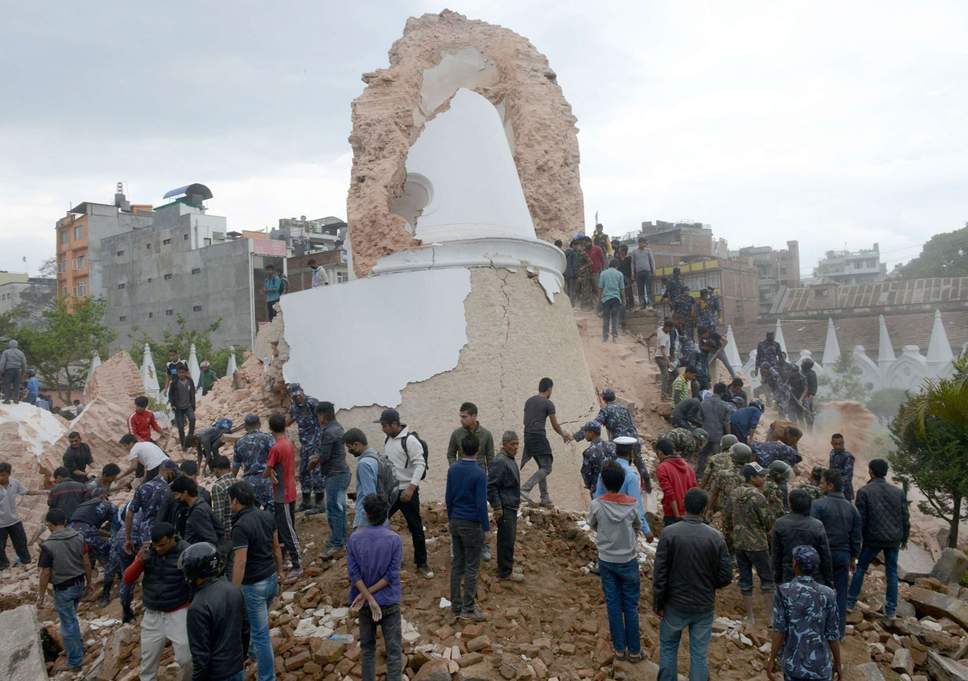“It was Saturday, 25 April, 2015. Tehrathum Sarokar Samaj was organizing a picnic program at Thankot. Since, I was from Tehrathum, I planned to take part in the event. I was heading to Thankot by a public bus. The clock was ticking 11:56 am. When I was about to reach the spot, passengers began to get off the bus. I thought the bus was facing some technical glitches that forced the driver to pull it over. I came to realize that it was an earthquake only when I got off the bus. The entire earth including facilities, trees and other infrastructures started shaking all of a sudden with a boom,” shared Asim, a survivor, recalling the ordeal he underwent five years ago.
People took to social media to inform each other on the temblor since communication service was partially damaged. A 7.8 magnitude earthquake as recorded by Nepal’s National Seismological Centre (NSC), had struck Barpak in the historic district of Gorkha, about 76 km northwest of Kathmandu. The earthquake was followed by a large number of aftershocks, including one measuring 7.3 on the Richter scale on 12 May.
The deadly earthquake destroyed entire villages, traffic routes and cultural monuments including Dharahara, leaving around 9,000 people dead.
Nepal was struck by an earthquake with a magnitude of 7.8 in 2015, but the country may still face the threat of much stronger temblor. This is the conclusion reached by researchers based on a new model that simulates physical processes of earthquake rupture between the Eurasian and Indian Plates.
The earthquake was followed by more than 300 aftershocks greater than magnitude 4.0 (as of 7 June 2015). Four aftershocks were greater than magnitude 6.0, including one measuring 6.8 on the Richter scale which struck 17 days after the first big one with the epicenter near Mt. Everest. To date, there are over 8,790 casualties and 22,300 injuries, according to the government. As many as 31 among the country’s 75 districts have been affected, out of which 14 were declared ‘crisis-hit’ for the purpose of prioritizing rescue and relief operations; another 17 neighboring districts labeled as ‘partially affected’.
Hundreds of historical and cultural monuments at least a century old were either destroyed or extensively damaged. Over half a million houses including government buildings, heritages sites, schools, hospitals, roads, bridges, water supply systems, trekking routes and hydropower plants were destroyed.
Nepal was struck by an earthquake with a magnitude of 7.8 in 2015, but the country may still face the threat of much stronger temblor. This is the conclusion reached by researchers based on a new model that simulates physical processes of earthquake rupture between the Eurasian and Indian Plates.
In response to the disaster, the government and opposition parties agreed to create a new public body, the National Reconstruction Authority (NRA), to oversee rebuilding.
Meanwhile, donors pledged more than US$4 billion to the NRA, but unfortunately little of the aid money has found its way into the work of rebuilding. As a result, fewer than 10% of the roughly 500,000 damaged homes have been reconstructed with support from the government and donors.
The latest figures from the Department of Archaeology state that 204 projects have been completed out of 753 monuments destroyed the across the country.
The NRA has been providing grant of Rs 200,000 per household for the purchase of construction plots in safer places for families living in vulnerable areas after the earthquake. The beneficiaries who have bought construction plots with the grant of Rs 200,000 are also eligible for the grant of Rs 300,000 for private housing reconstruction.
223 heritage sites reconstructed
A total of 223 cultural heritage sites, damaged in the 2015 temblor, have been reconstructed. Of them, 161 were reconstructed through the Department of Archaeology, 20 through Pashupati Area Development Trust (PADT) and 42 through other agencies.
Similarly, 205 other heritage sites are being built under the DoA while 221 more through other concerned authorities, according to spokesperson of the DoA Ram Bahadur Kunwar.
According to Kunwar, the reconstruction of all the heritage sites would cost around Rs 10 billion. So far, 1.8 billion has been spent, he added.









Comment